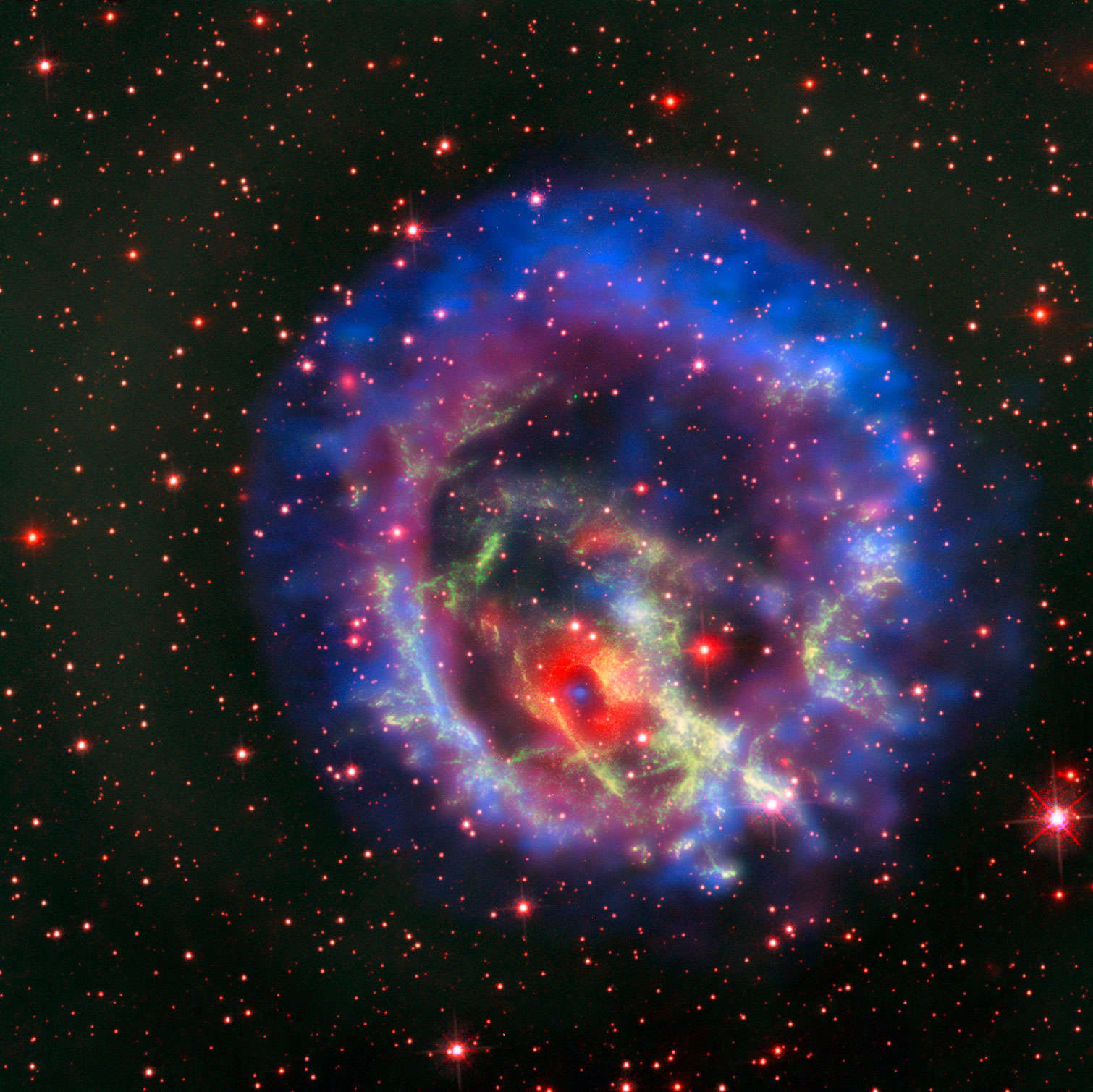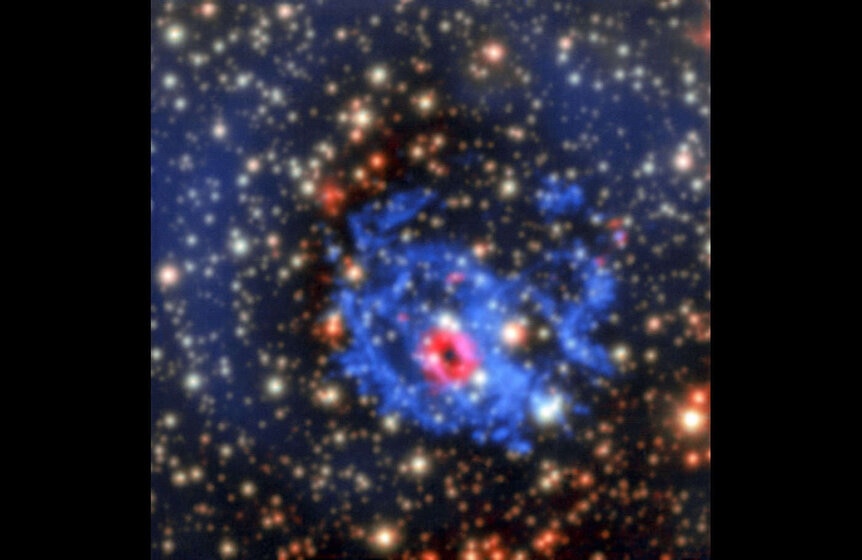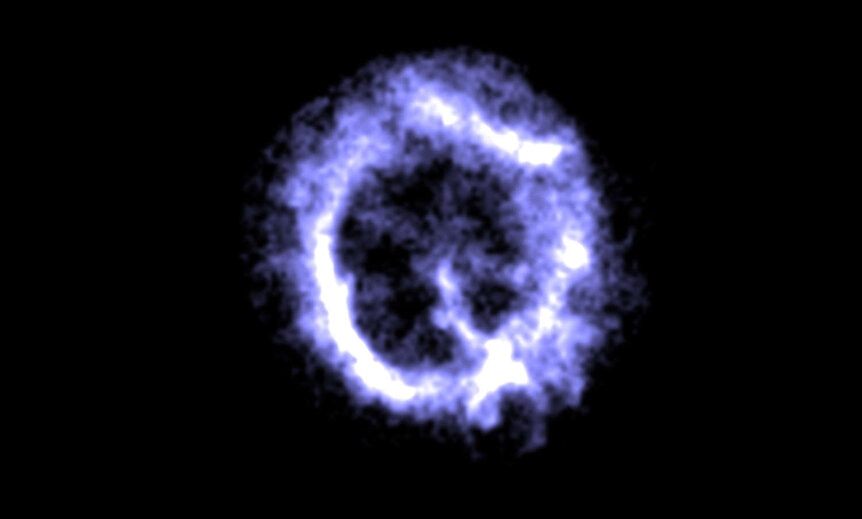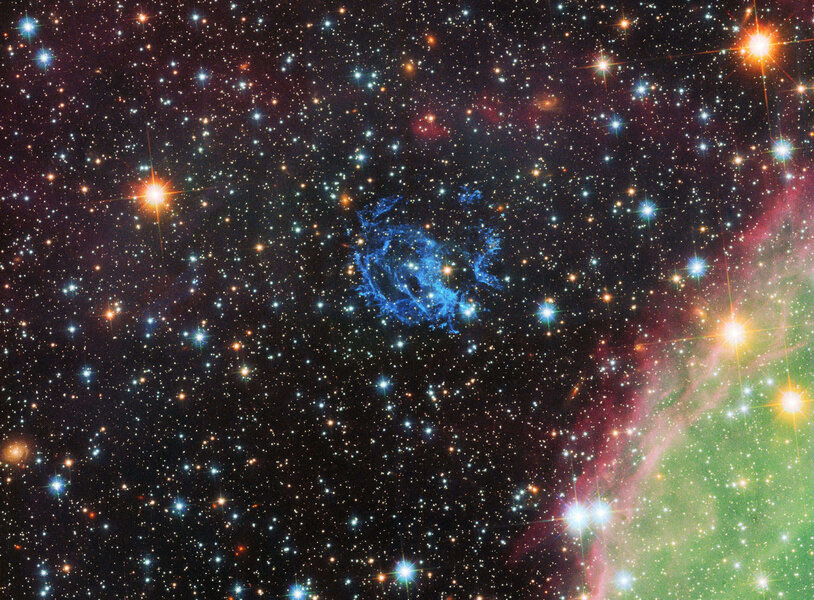Create a free profile to get unlimited access to exclusive videos, sweepstakes, and more!
The first lone neutron star ever seen outside the Milky Way

It doesn't happen too often, but sometimes I'll see a press release and/or read a paper reporting a first-of-its-kind observation that genuinely surprises me because I figured it would've been done long ago.
Going through some old emails, though, I saw a press release from a few years ago announcing astronomers had found the first lone neutron star outside our Milky Way galaxy.
My reaction was confusion. Neutron stars are the leftover cores of stars that explode as supernovae; the core collapses down to a ball about 25 kilometers wide, with ridiculously fierce surface gravity (a hundred million times Earth's at least) and intense magnetic fields.
We know of several neutron stars in other galaxies, I thought. They're powerful beasts, and easily capable of blasting out radiation on a scale that could be detected across near intergalactic space. We won't be seeing them in distant galaxies, but there are lots of galaxies pretty close by where we see them.
Then I thought about it for a moment and realized my mistake. First of all this one is alone in space; when a neutron star is orbiting another star like the Sun it can emit powerful X-rays basically announcing its presence to everyone within a million light years. But this one is alone, not orbiting another star.
Second, even from a couple of hundred thousand light years away a lone neutron star isn't terribly bright, so finding one can be hard. Heck, we've been looking for one leftover from Supernova 1987A for over 30 years and still haven't clearly found it.
Sometimes, though, nature makes it easy: This new one was literally circled by a ring of light in the sky.
The Small Magellanic Cloud is a satellite galaxy to the Milky Way, about 200,000 light years from us. In it is a well-known supernova remnant — the expanding debris from a massive star exploding — called 1E 0102.2-7219. The star probably blew up a thousand or so years ago, sending several times the mass of the Sun worth of gas screaming away from it at thousands of kilometers per second. I first heard of it in 1999 when a Chandra X-ray Observatory image of it came out, which tickled me because it looks just like a giant letter Q in the sky.
That was another reason this news surprised me: The supernova had been known for a long time, so if there were a neutron star in it I figured it would've been seen. But that's not the case.
Astronomers observed this debris with the MUSE camera on the Very Large Telescope in Chile, and saw a small ring of gas near the center. This ring is glowing in visible light (the kind we see) emitted by atoms of oxygen, carbon, and neon, and weirdly is not moving as rapidly as the debris around it; it's expanding but at the relatively pokey rate of about 90 km/sec.
That's weird. But the fact that it's a ring and expanding slowly does strongly imply that the center of the ring is the location of the star that exploded; it's hard to imagine any other way the ring could exist. So they searched archived images of the debris to look for anything left behind by the explosion. It wasn't seen at first in those earlier Chandra observations, but when they reprocessed that old Chandra data they found a sharp X-ray emitting source right smack dab in the center: a neutron star.
Cool. They looked at a fairly narrow range of X-ray colors, but even then the neutron star is blasting out radiation equal to the total energy of the Sun! Think of it this way: Imagine a star so powerful that just in, say, a very narrow slice of red it was emitting as much light as the Sun did across the spectrum. That's the case here, but it's in X-rays, which implies a powerful source of energy. Normal stars are not terribly bright in X-rays, but neutron stars certainly can be.
So there you go: The first lone neutron star ever seen outside our own galaxy.
But we're not done. What the heck was the ring they saw?
The astronomers speculate a bit on what could have formed it. The most likely scenario, they think, is that it comes from deep inside the star that exploded, where there was a very precarious balance. The core of the star collapsed to form the neutron star, and the material above was blasted away at a decent fraction of the speed of light. But material just above the core could have been blown outward, but not nearly as rapidly as material closer to the surface. Caught between gas moving away and gas collapsing down, it expanded slowly — well, quickly enough to get from the Earth to the Moon in an hour, but that's still far less than the other debris — creating a torus of material around the neutron star.
Given the ring's size and speed, this implies the explosion happened about 7,000 years ago, which is much longer ago than the estimated age of the supernova. However, both numbers have large uncertainties so it's not out of the question the ring formed at the same time the star exploded.
But it's not clear this is actually how the ring formed, so more observations and more models will have to be made.
In astronomy, data are never wasted. Especially now; we can save digital observations that can be used years or even decades later, reprocessed using new techniques, and uncover treasures buried all that time. That was the key to this discovery.
This is the first lone neutron star found outside our galaxy, and finding them is harder than I thought. I may have been surprised by this first one, but now I think finding more is inevitable.






























